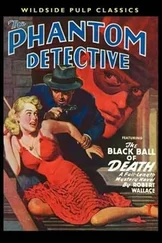Though on present evidence it is impossible to be categoric about the origins of the medieval pandemic, recent investigations by the Russian archaeologist Chwolson near Lake Issyk-Koul in the district of Semiriechinsk in Central Asia show that there was an abnormally high death rate in 1338 and 1339. Nestorian memorial stones attribute the deaths to plague. {34} 34 34 J. Stewart, The Nestorian Missionary Enterprise, Edinburgh, 1928, p. 209.
Given the later course of the disease and the fact that this area is in the heart of one of the zones in which bubonic plague lies endemic, Dr Pollitzer, probably the leading authority on the subject, has concluded that this was almost certainly the cradle of the Black Death. {35} 35 35 R. Pollitzer, Plague, W.H.O. Publication, Geneva, 1954, p. 13.
From thence it spread out, eastwards into China, south to India and west to reach the Crimea some eight years later.
In this remote fastness, since recorded history, the bacillus Pasteurella pestis has lingered on, finding its home either in the bloodstream of an animal or the stomach of a flea. The flea normally favoured is Xenopsylla cheopsis , familiarly X. cheopsis , an insect which, in its turn, chooses ideally to reside in the hair of some rodent. One can only guess which rodent was most readily to be found near Lake Issyk-Koul in 1338 but the experience of later epidemics points to the tarbagan or Manchurian marmot, a beguiling squirrel-like creature much hunted for its skin. The jerboa and the suslik probably also played their part and, of course, the rat too, though the latter’s main role was not to come till the disease was on the move.
To disturb the tranquil and largely harmless existence of Pasteurella pestis something had to happen to make the rodents leave their homes. With them, inevitably, would travel their attendant fleas and, within the fleas, a cargo of deadly parasites. We are unlikely ever to know exactly what it was which caused this particular rodent migration. Such evidence as survives suggests that they were driven away by floods but, on other occasions, prolonged droughts have provided the necessary incentive or it could simply have been that an increase in the rodent population put too great a strain on the available supplies of food. At all events a massive exodus took place and it was above all Rattus rattus , the tough, nimble, by nature vagabond, black rat which made the move.
Without disputing the importance of the rat as a carrier of plague, Professor Jorge has suggested that its role, except in the earliest stages of an epidemic, is inessential, and that the lack of references to it in contemporary accounts of the Black Death indicates that the infection was mainly dependent on other means of transport. {36} 36 36 Jorge, Bull. Off. Int. Hyg. Publ. Vol. 25, 1933, p. 425.
He believed that Pulex irritans , the flea which preys above all on human beings, was perfectly capable of carrying the plague direct from man to man without the intervention of an infected rat. Medically this is doubtful. There is no need to eliminate Pulex irritans altogether as an extra factor but its capacity to drink in sufficient plague bacilli from one person so as to be able to implant a fatal dose in the next has been much questioned. Colonel MacArthur has recorded that, in blood cultures made from fatal cases of bubonic plague, he found ‘bacilli so sparse that theoretically one could have fed twenty thousand fleas on such a case and yet have infected none.’ {37} 37 37 MacArthur, ‘Old Time Plague in Britain’, Trans. Roy. Soc. Trop. Med. Hyg., Vol. XIX, p. 355.
There is certainly no doubt that the rapid spread of bubonic plague was greatly helped by the presence of infected rats. Nor was there any shortage of rats. By the middle of the fourteenth century they abounded in Europe, probably having been imported originally in the boats of the returning Crusaders. Their role was unobtrusive and, since there is no particular reason why contemporaries should have commented on their activities, their absence from the chronicle casts no doubt on their existence. Dead rats no doubt littered the streets and houses but this would hardly have seemed worthy of attention at a time when dead human beings were so much more conspicuous.
But though the rat helps greatly in the spread of bubonic plague, Professor Jorge is right in his contention that it is not essential. The Plague Research Commission of 1910 commented ‘…the transference of infected rats and fleas in merchandise, or in the case of fleas, on the body of a human being, must be considered.’ {38} 38 38 Reports on Plague Investigations in India. No. 39 of 1910.
It has been, and Dr Hirst has shown that the adage ‘No ship rats, no plague’ is palpably untrue. {39} 39 39 Hirst, op. cit., p. 324.
X. cheopsis , in ideal conditions, can live for a month away from its host. Travelling with a cargo of grain or in a bale of cloth it could easily journey hundreds of miles without a rat. There is one substantiated case of a flea surviving unfed for six months in a rat burrow. The absence of rats, therefore, was far from a guarantee that bubonic plague could never strike.
The symptoms of bubonic plague as known today coincide precisely with those described by the medieval chroniclers. The ‘swollen and dropsical mass of inflamed lymphatic glands’ known as the bubo is the classic sign. Sometimes this is the size of an almond, sometimes of an orange; usually it is found in the groin but it may also grow in the armpit or, occasionally, on the neck. Equally familiar are the dusky stains or blotches caused by subcutaneous haemorrhages and the intoxication of the nervous system: ‘In Provence a man climbed on to the roof of his house and threw down the tiles into the street. Another executed a mad, grotesque dance on the roof…’ {40} 40 40 Nohl, op. cit., p. 31.
Modern medical experience suggests that, if the bubo breaks down and suppurates within a week, the victim will probably survive; few medieval doctors would have expected their patient to endure more than four or five days of the agonizing pain which accompanies the boil. But otherwise the cases observed by Boccaccio or Simon of Covino could be found in half a dozen plague centres today.
But though bubonic plague was the first and most conspicuous form taken by the Black Death, a variant known as primary pneumonic or pulmonary plague was more lethal. In the epidemics of the late nineteenth century, when methods of treatment were remarkably little more sophisticated than in the Middle Ages, between sixty and ninety per cent of those who caught bubonic plague could expect to die. In the case of pneumonic plague recovery was virtually unknown. Bubonic plague would generally take between four days and a week to kill; in the Manchurian epidemic of 1921 the expectation of life of the victims of pneumonic plague was a mere 1.8 days. Finally, bubonic plague is one of the less infectious epidemic diseases; the breath is not affected and the patient usually died or recovered before enough bacilli have accumulated in the blood to make it a source of infective material for the flea. {41} 41 41 Greenwood, Epidemics and Crowd Diseases, London, 1935, p. 308.
Pneumonic plague is perhaps the most infectious; it attacks the lungs so that there is coughing of blood and the plague bacilli are sprayed out into the air every time that the patient exhales.
Hirst has remarked {42} 42 42 op. cit., p. 28.
that, if it were not known that they had a common origin and were linked by intermediate types, true pneumonic and uncomplicated bubonic plague would seem to be different diseases. The link between the two is to be found in an attack of bubonic plague during which the victim also develops pneumonia. This compound, though extremely dangerous to the victim, is not usually infectious. Yet, in certain cases, it may become so. The main outstanding problem of the Black Death, or indeed of the plague in any era, is what the factors are which make this happen, what it is which provokes an epidemic of the air-borne pneumonic variant of the disease.
Читать дальше












